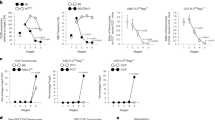Abstract
Stimulation of interleukin-2 producing T lymphocytes via the T cell receptor (TCR) complex in the absence of other costimulatory factors results paradoxically not in activation but in an unresponsive state termed clonal anergy. T cell anergy appears to be a mechanism by which potentially autoreactive T lymphocytes are inactivated in the periphery, thus maintaining tolerance to self antigens. The breakdown of such tolerance may result in autoimmune diseases. In contrast, induction of peripheral tolerance is the ultimate goal in organ transplantation and is a potential mechanism by which a growing tumor evades immune destruction. The anergic state is characterized by an inability to secrete interleukin-2 and proliferate following restimulation via the TCR even in the presence of costimulatory factors. Recent studies have demonstrated a specific block in Ras activation in anergic T lymphocytes. This defect is correlated with a failure to activate the downstream effectors Erk and Jnk and a lack of activation of the AP-1 transcription factor complex, offering a plausible mechanism for the inability to initiate interleukin-2 gene transcription in the anergic state.
Similar content being viewed by others
Author information
Authors and Affiliations
Additional information
Received: 6 May 1996 / Accepted: 24 June 1996
Rights and permissions
About this article
Cite this article
Fields, P., Fitch, F. & Gajewski, T. Control of T lymphocyte signal transduction through clonal anergy. J Mol Med 74, 673–683 (1996). https://doi.org/10.1007/s001090050071
Issue Date:
DOI: https://doi.org/10.1007/s001090050071




